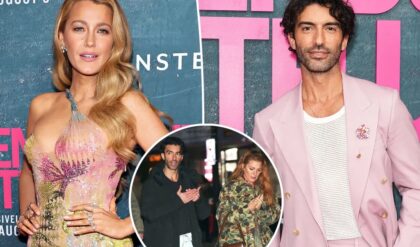Caitlin Clark has emerged as a transformative figure in the WNBA, captivating fans with her dynamic play and record-setting performances. Her impact on the league has been nothing short of remarkable, leading to a surge in viewership, merchandise sales, and ticket sales, especially for the Indiana Fever, a team that previously struggled to draw attention.
However, as the playoffs unfold without her presence, the WNBA is confronted with a stark reality: the league’s viewership has plummeted from an average of 1.8 million to a mere 161,000 when Clark is absent.

This sharp decline raises serious concerns for WNBA commissioner Cathy Engelbert and her team. Clark has undeniably been a game-changer, not just for her team but for the entire league.
Her ability to draw crowds and engage fans has shifted the narrative around women’s basketball, turning the Fever into a must-watch team. Attendance skyrocketed by 156%, and TV ratings nearly tripled during her games, attracting viewers who may never have tuned in before. This enthusiasm and engagement have created a palpable buzz around the league, but with her out of the picture, that excitement has waned.
The WNBA’s current predicament highlights a broader issue: the league has heavily relied on Clark’s star power, and now it finds itself grappling with empty arenas and dwindling ratings. The playoff games, once electrified by her performances, are now struggling to even hit half a million viewers.
This not only affects fan engagement but also threatens the financial stability of the league, which, despite the NBA’s substantial annual investment of $200 million, still operates with revenue that pales in comparison to the NBA’s $3 billion.

Compounding the situation is the apparent lack of promotion surrounding Clark. Despite being the league’s most significant asset this season, the WNBA has not leveraged her star power through substantial marketing campaigns or high-profile endorsements. This missed opportunity raises questions about the league’s strategic approach to building its brand and attracting a wider audience.
Moving forward, the WNBA must recognize the urgency of diversifying its star power and cultivating new talent. While Clark is a remarkable player, relying solely on her is not a sustainable strategy.
The league needs to foster rivalries, enhance storytelling, and elevate other players to the forefront. Engaging narratives and charismatic athletes can help to create a more vibrant league atmosphere that keeps fans invested, regardless of individual player performances.

The WNBA stands at a crossroads. It can either wait for the emergence of another superstar or take proactive steps to build a more robust and diverse ecosystem. If it continues down the path of over-reliance on a single player, the current challenges may evolve into more significant issues that could threaten the league’s future.
As fans and stakeholders, we must ponder the question: Can the WNBA survive without Caitlin Clark, or are we witnessing the beginning of deeper problems within women’s professional basketball? The answer lies in the league’s ability to adapt and innovate.
By seizing the moment and investing in a broader array of talent and narratives, the WNBA can position itself for sustained success, even in the absence of its brightest star





